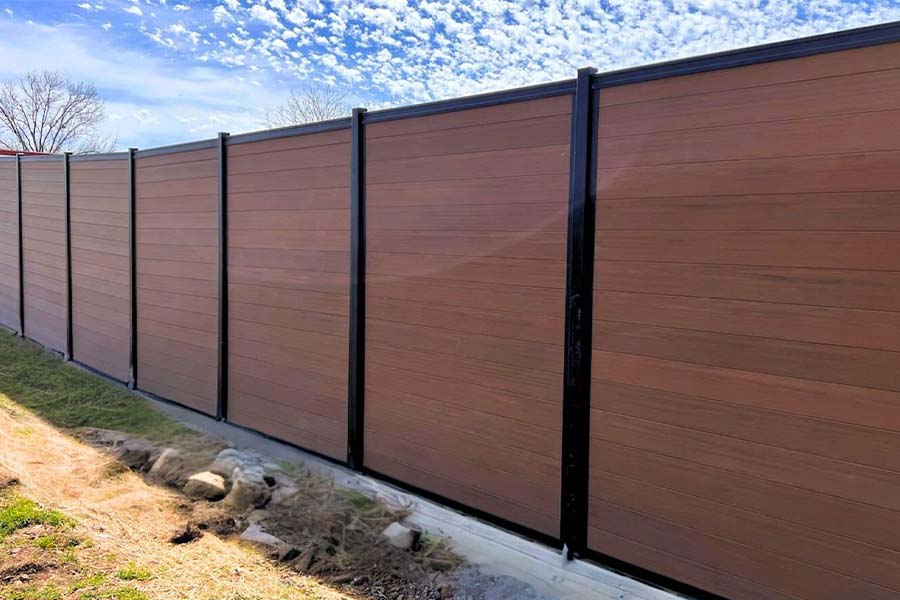Featured

Whether it's solid winds, rainfall, snow, or extreme heat, climate conditions can slowly deteriorate your fencing, leading to expensive repairs or replacement. There are numerous steps you can take to protect your fence from weather-related damage and expand its lifespan.
- Choose the Right Material. The kind of product your fence is made from plays a considerable duty in exactly how well it will certainly hold up against weather. Some materials are naturally extra resistant to damages than others. :
Wooden Fencings: While classic and gorgeous, timber can be susceptible to moisture, rot, and bugs. However, pressure-treated timber or cedar can supply better resistance to these issues. Vinyl Fences: Plastic is highly resistant to moisture, rot, and insects. It likewise stands up well to severe sun and heavy rainfall. Metal Fencings: Wrought iron or aluminum fencings are sturdy and can stand up to a variety of weather problems. They can, however, deal with rust with time, particularly if not appropriately coated. Composite Fences: Made from a combination of wood fibers and plastic, composite fencings are more resistant to weather-related damages contrasted to traditional wood fencings. Picking the appropriate material for your area's climate is the first step in securing your fencing from weather damages.
- Seal or Stain Wooden Fences. Wooden fences are especially vulnerable to damage from wetness, UV rays, and temperature level variations. Among one of the most reliable methods to secure your wood fence is by using a protective sealant or discolor. These items help:
Stop Water Damage: Sealers develop a waterproof barrier, preventing moisture from leaking into the wood and causing rot, mold, or mold and mildew. Safeguard Against UV Damages: A good tarnish or sealant will certainly additionally obstruct hazardous UV rays from the sun, which can cause wood to dry out, crack, and discolor with time. Maintain the Fence's Appearance: Regular discoloration assists preserve the all-natural charm of the wood and prolongs its lifespan. It's advised to reapply the tarnish or sealant every 1-- 2 years to maintain your surround great problem.
- Install an Obstacle for Wind Defense. Strong winds can create substantial damage to your fencing, especially if it is high or weak. Wind can flex or break wooden panels, loosen up fencing messages, or even create the whole fence to collapse. Mounting a windbreak-- such as planting bushes, hedges, or mounting a mesh barrier-- can aid safeguard your fence from high winds.
Additionally, you can strengthen the posts with concrete or steel dental braces to offer extra security and avoid shifting or leaning.
- Trim Overhanging Branches. Looming tree branches can present a severe danger to your fencing during storms or high winds. Dropping branches can break panels or damage the fencing posts, bring about expensive repair work. Frequently trim any kind of branches that hang over your fencing, specifically if they remain in close distance to it. Maintaining the branches cut down minimizes the risk of branches breaking off and triggering damages to the fence.
- Regular Evaluations and Maintenance. Executing normal maintenance and inspections is key to catching potential problems before they rise. After a hefty storm, evaluate your fencing for any kind of indications of damage, such as loosened panels, leaning posts, or damaged sections. Dealing with small issues before they end up being larger ones can assist expand the life of your fencing.
Furthermore, cleansing your fencing regularly to remove mold, dirt, or particles can help protect its look and integrity. For wood fences, delicately stress wash the surface to remove built-up grime, and for vinyl fencings, utilize a light cleaning agent to clean up any stains.

- Make Sure Correct Drain. Water damages is among one of the most typical weather-related concerns that impact fences. Poor drainage can cause standing water around your fencing messages, which can cause the articles to rot or deteriorate in time. To stop this, see to it the ground around your fence inclines far from the articles. You might also want to install water drainage solutions such as French drains pipes or crushed rock at the base of the articles to prevent water from merging.
- Apply a Protective Covering to Metal Fencings. Metal fencings, such as those constructed from iron or steel, are very sturdy yet can be prone to rust if not correctly preserved. Using a protective covering or paint that is especially developed for steel can help stop rust and rust. Make certain to check the fencing regularly for any indicators of corrosion, and address it promptly by fining sand and painting the impacted areas.

Final thought. Your fencing is a useful investment, and securing it from weather-related damage will certainly aid guarantee that it remains to offer its function for several years to find. By choosing the ideal products, frequently keeping your fencing, and taking steps to protect it from the elements, you can lessen weather-related damages and expand its lifespan. Whether you're taking care of strong winds, hefty rain, or the extreme sunlight, these straightforward steps can go a long way in preserving the problem and look of your fence, conserving you time and money over time.
Latest Posts
Find Out Cut Costs on Car Maintenance with Montclare Auto Repair’s Exclusive Deals
Published en
1 min read
Uncover Top Car Repair Solutions at Montclare Auto Repair – Expert Care for Your Vehicle
Published en
1 min read
Explore WyHy Federal Credit Union – Wyoming’s Best Banking Choice for Your Money Goals
Published en
1 min read
More
Latest Posts
Find Out Cut Costs on Car Maintenance with Montclare Auto Repair’s Exclusive Deals
Published May 28, 25
1 min read
Uncover Top Car Repair Solutions at Montclare Auto Repair – Expert Care for Your Vehicle
Published May 27, 25
1 min read
Explore WyHy Federal Credit Union – Wyoming’s Best Banking Choice for Your Money Goals
Published May 26, 25
1 min read